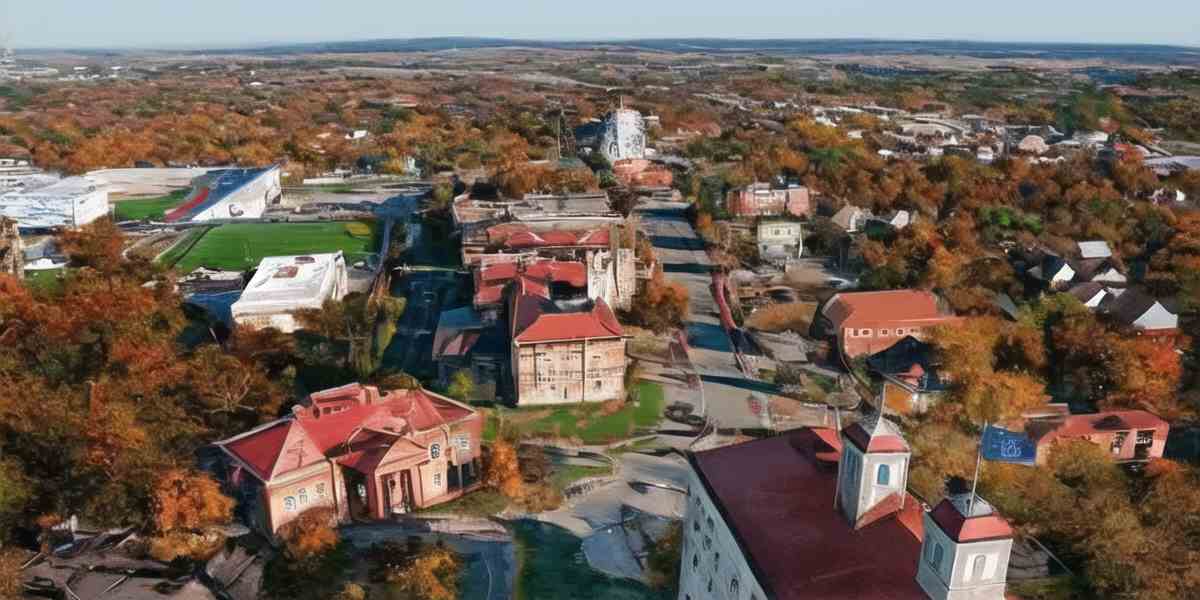University of Kansas
2024 USNews Best Colleges Ranking: 151(↓30) (Click for schools/majors ranking)
Abbreviation/Alias: University of Kansas | Univ of Kansas | Kansas University | KU | Kansas Jayhawks | Univ of KS | University of KS | Kansas Univ | Kansas U, KUMC, University of Kansas Medical Center, KU Medical Center, Kansas University Medical Center
School Characteristics: Private (4-Years)
Calendar systerm: Semester
Religious Affiliation: Not applicable
School Chief: Douglas A. Girod (Chancellor)
Website: https://ku.edu/; Phone: 7858642700
Location: Strong Hall, 1450 Jayhawk Blvd, Room 230, Lawrence, KS, 66045

University of Kansas Important Facts
University of Kansas Degrees and Majors
University of Kansas Ranking and Admission
University of Kansas Admission Score Requires
*Numbers at left represent SAT/ACT submitting percentage, numbers on blue blocks represent 25%-75% admission scores
**Drag green block to check data for different years, click blue block to check scores trends
University of Kansas Students Diversity
University of Kansas Students Age Distribution
University of Kansas International Students Trends
University of Kansas Campus and Safety
Nearby Top Colleges
Campus Safety
Reference
- University of Kansas Official Website
- USNews Best Colleges Ranking
- USNews Bset Global Universities Ranking
- THE World University Ranking
- QS World University Ranking
- ARWU World University Ranking
- US Department of Education College Scorecard
- National Center for Education Statistics
- Forward Pathway US College Ranking Database
 University of Kansas Important Facts Trends
University of Kansas Important Facts Trends
 University of Kansas degrees/majors
University of Kansas degrees/majors
University of Kansas major details
*Depends on whether majors have graduates in 2022 or not, Yes / No
**Move mouse on can check deitaled graudates number, click for major detailed information
***Due to privacy policy, graduate salaries are not shown for some majors that has few gradautes
| Major | Graduate Salary | Under | Master | Doctor |
|---|---|---|---|---|
| Business/Commerce, General. | $60,067 | |||
| Business Administration and Management, General. | $77,588-$102,367 | |||
| Logistics, Materials, and Supply Chain Management. | $77,588-$102,367 | |||
| Research and Development Management. | $77,588-$102,367 | |||
| Project Management. | $77,588-$102,367 | |||
| Organizational Leadership. | $77,588-$102,367 | |||
| Accounting. | $64,135-$73,609 | |||
| Finance, General. | $66,001 | |||
| International Business/Trade/Commerce. | - | |||
| Management Information Systems, General. | $71,526 | |||
| Management Science. | - | |||
| Marketing/Marketing Management, General. | $67,616 | |||
| Construction Management, General. | - |
| Major | Graduate Salary | Under | Master | Doctor |
|---|---|---|---|---|
| Curriculum and Instruction. | $51,786 | |||
| Educational Leadership and Administration, General. | $48,288 | |||
| Higher Education/Higher Education Administration. | $48,288 | |||
| Educational Administration and Supervision, Other. | $48,288 | |||
| Social and Philosophical Foundations of Education. | - | |||
| Special Education and Teaching, General. | $54,527-$57,203 | |||
| Elementary Education and Teaching. | $44,282 | |||
| Secondary Education and Teaching. | $44,282 | |||
| Early Childhood Education and Teaching. | $44,282 | |||
| Art Teacher Education. | $47,299-$54,396 | |||
| Music Teacher Education. | $47,299-$54,396 | |||
| Physical Education Teaching and Coaching. | $47,299-$54,396 |
| Major | Graduate Salary | Under | Master | Doctor |
|---|---|---|---|---|
| Aerospace, Aeronautical, and Astronautical/Space Engineering, General. | - | |||
| Architectural Engineering. | - | |||
| Bioengineering and Biomedical Engineering. | - | |||
| Chemical Engineering. | $82,447 | |||
| Civil Engineering, General. | $76,320 | |||
| Computer Engineering, General. | - | |||
| Electrical and Electronics Engineering. | $86,763 | |||
| Engineering Physics/Applied Physics. | - | |||
| Environmental/Environmental Health Engineering. | - | |||
| Mechanical Engineering. | $79,635 | |||
| Petroleum Engineering. | $72,619 | |||
| Engineering, Other. | - |
| Major | Graduate Salary | Under | Master | Doctor |
|---|---|---|---|---|
| Speech Communication and Rhetoric. | $52,304 | |||
| Mass Communication/Media Studies. | $52,304 | |||
| Journalism. | $54,736 | |||
| Digital Communication and Media/Multimedia. | - | |||
| Organizational Communication, General. | - |
| Major | Graduate Salary | Under | Master | Doctor |
|---|---|---|---|---|
| Psychology, General. | $43,397 | |||
| Research and Experimental Psychology, Other. | - | |||
| Counseling Psychology. | - | |||
| School Psychology. | - | |||
| Educational Psychology. | - | |||
| Clinical Child Psychology. | - |
| Major | Graduate Salary | Under | Master | Doctor |
|---|---|---|---|---|
| Dance, General. | - | |||
| Design and Visual Communications, General. | $50,894 | |||
| Drama and Dramatics/Theatre Arts, General. | $23,856 | |||
| Film/Cinema/Media Studies. | $30,786 | |||
| Fine/Studio Arts, General. | $25,999 | |||
| Art History, Criticism and Conservation. | $25,999 | |||
| Music, General. | - |
| Major | Graduate Salary | Under | Master | Doctor |
|---|---|---|---|---|
| Public Administration. | $55,797 | |||
| Health Policy Analysis. | - | |||
| Social Work. | $44,136-$54,465 |
| Major | Graduate Salary | Under | Master | Doctor |
|---|---|---|---|---|
| Anthropology, General. | - | |||
| Economics, General. | $53,664 | |||
| Econometrics and Quantitative Economics. | $53,664 | |||
| Geography. | - | |||
| Geographic Information Science and Cartography. | - | |||
| Political Science and Government, General. | $56,303 | |||
| Sociology, General. | $52,185 |
| Major | Graduate Salary | Under | Master | Doctor |
|---|---|---|---|---|
| Biological and Physical Sciences. | - | |||
| Museology/Museum Studies. | - | |||
| Behavioral Sciences. | $42,992 | |||
| Nutrition Sciences. | - | |||
| International/Globalization Studies. | $38,972 | |||
| Ancient Studies/Civilization. | - | |||
| Intercultural/Multicultural and Diversity Studies. | - | |||
| Human Biology. | - |
| Major | Graduate Salary | Under | Master | Doctor |
|---|---|---|---|---|
| Sport and Fitness Administration/Management. | $57,522 | |||
| Exercise Science and Kinesiology. | $57,522 |
| Major | Graduate Salary | Under | Master | Doctor |
|---|---|---|---|---|
| Computer and Information Sciences, General. | $78,561 | |||
| Information Technology. | $78,561 |
| Major | Graduate Salary | Under | Master | Doctor |
|---|---|---|---|---|
| Mathematics, General. | - | |||
| Applied Statistics, General. | - |
| Major | Graduate Salary | Under | Master | Doctor |
|---|---|---|---|---|
| City/Urban, Community, and Regional Planning. | - | |||
| Interior Architecture. | - | |||
| Architectural and Building Sciences/Technology. | - |
| Major | Graduate Salary | Under | Master | Doctor |
|---|---|---|---|---|
| Legal Studies. | - | |||
| Law. | $79,717 | |||
| Advanced Legal Research/Studies, General. | - |
| Major | Graduate Salary | Under | Master | Doctor |
|---|---|---|---|---|
| Astronomy. | - | |||
| Atmospheric Sciences and Meteorology, General. | - | |||
| Chemistry, General. | - | |||
| Geology/Earth Science, General. | - | |||
| Physics, General. | - |
| Major | Graduate Salary | Under | Master | Doctor |
|---|---|---|---|---|
| Linguistics. | - | |||
| East Asian Languages, Literatures, and Linguistics, General. | - | |||
| Slavic Languages, Literatures, and Linguistics, General. | - | |||
| French Language and Literature. | $42,135 | |||
| Spanish Language and Literature. | $42,135 | |||
| Classics and Classical Languages, Literatures, and Linguistics, General. | - | |||
| American Sign Language (ASL). | - |
| Major | Graduate Salary | Under | Master | Doctor |
|---|---|---|---|---|
| Liberal Arts and Sciences/Liberal Studies. | $44,562 | |||
| Humanities/Humanistic Studies. | $44,562 |
| Major | Graduate Salary | Under | Master | Doctor |
|---|---|---|---|---|
| English Language and Literature, General. | $37,147 | |||
| Creative Writing. | - |
| Major | Graduate Salary | Under | Master | Doctor |
|---|---|---|---|---|
| Environmental Studies. | - |
| Major | Graduate Salary | Under | Master | Doctor |
|---|---|---|---|---|
| History, General. | $39,942 |
| Major | Graduate Salary | Under | Master | Doctor |
|---|---|---|---|---|
| African Studies. | - | |||
| American/United States Studies/Civilization. | - | |||
| Russian Studies. | - | |||
| German Studies. | - | |||
| Latin American and Caribbean Studies. | - | |||
| American Indian/Native American Studies. | - | |||
| Women's Studies. | - |
| Major | Graduate Salary | Under | Master | Doctor |
|---|---|---|---|---|
| Philosophy. | - | |||
| Religion/Religious Studies. | - | |||
| Jewish/Judaic Studies. | - |
| Major | Graduate Salary | Under | Master | Doctor |
|---|---|---|---|---|
| Engineering/Industrial Management. | - |
| Major | Graduate Salary | Under | Master | Doctor |
|---|---|---|---|---|
| Homeland Security. | - |
 University of Kansas Schools/Majors Ranking
University of Kansas Schools/Majors Ranking
Under Ranking (2024)
World University Ranking
Grad Ranking (2025)
- Education School# 20(↓2)-
- Public Affairs# 26(↓1)+
- Law School# 46(↓6)+
- Dispute Resolution# 36(↓10)
- Environmental Law# 47(↓3)
- Legal Writing# 57(↑11)
- Contracts Law# 58(↑14)
- Business/Corporate Law# 64(↑14)
- Criminal Law# 73(↑35)
- Constitutional Law# 78(↓13)
- Tax Law# 81(↑10)
- International Law# 84(→)
- Clinical Training# 85(↑21)
- Intellectual Property Law# 101(↑4)
- Trial Advocacy# 126(↑13)
- Health Care Law# 132(↑3)
- Business School# 60(↑18)+
- Medical School (Primary Care)# 14(↓4)
- Medical School (Research)# 75(↓11)
- Engineering School# 121(↓19)+
- Fine Arts# 64(↑5)
- Health Specialty+
- Science+
- Social Sciences and Humanities+
*Rankings have been updated to 2025USNews schools/majors ranking, rankings are for reference only
*numbers in bracket represent rankings change compare to last version
 University of Kansas Varsity Athletes
University of Kansas Varsity Athletes
| NCAA Division I-FBS | MEN | WOMEN |
|---|---|---|
| Track and Field and Cross Country (combined) | 120 | 118 |
| Football | 119 | - |
| Rowing | - | 74 |
| Baseball | 45 | - |
| Basketball | 18 | 15 |
| Swimming and Diving (combined) | - | 31 |
| Soccer | - | 26 |
| Golf | 13 | 10 |
| Softball | - | 21 |
| Volleyball | - | 21 |
| Tennis | - | 9 |
| NCAA Division I-FBS | MEN | WOMEN |
|---|---|---|
| All Track Combined | 112 | 108 |
| Football | 121 | - |
| Rowing | - | 62 |
| Baseball | 47 | - |
| Swimming and Diving | - | 32 |
| Basketball | 15 | 15 |
| Soccer | - | 30 |
| Softball | - | 23 |
| Golf | 11 | 11 |
| Volleyball | - | 18 |
| Tennis | - | 8 |
| NCAA Division I-FBS | MEN | WOMEN |
|---|---|---|
| All Track Combined | 131 | 117 |
| Football | 121 | - |
| Rowing | - | 73 |
| Baseball | 40 | - |
| Swimming and Diving | - | 32 |
| Soccer | - | 30 |
| Basketball | 15 | 13 |
| Softball | - | 24 |
| Golf | 12 | 11 |
| Volleyball | - | 16 |
| Tennis | - | 8 |

 University of Kansas Important Facts Trends
University of Kansas Important Facts Trends
















































































































































































































































































































































































































































